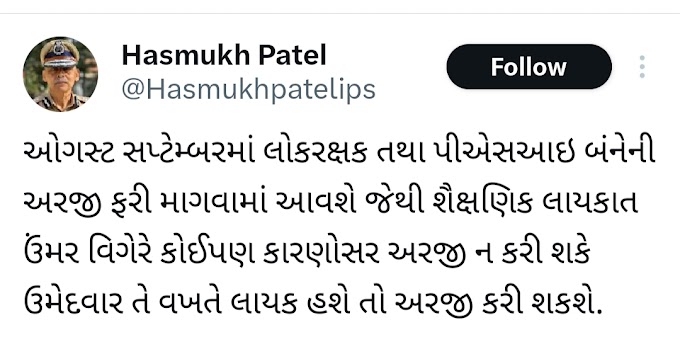SAMAJIK VIGYAN STD 8 SOCIAL SCIENCE AND STD 4 AND STD 5 GUJARATI NEW TEXT BOOK 2021 PDF FILE
The state boundaries between Uttarakhand and Uttarpradesh, Bihar and Jharkhand and Chattisgarh and Madhyapradesh have not been verified by the Governments concerned. 6. The spellings of names in this map, have been taken from various sources.
Establishment of Europeans and rule in Parat For centuries species, traders, travelers from all over the world have been coming to India. India has always been the center of attraction of the world. The main reasons are India's economic prosperity. India has had commercial T2N2W4 and cultural ties with different parts of the world since ancient times (Harappan civilization). In the 15th century AD, significant social and religious changes took place in Europe which we know as the "Renaissance". What does this have to do with the Renaissance and the history of India? To investigate this reason, we will try to understand why Europeans came to India from the 15th century. The reasons behind the arrival of European peoples in India In 1453, the Turks conquered Constantinople. It was the headquarters of the medium of trade between India and Europe. With the conquest of Constantinople by the Turks, Indian goods stopped flowing to Europe and the western countries of the world. Europeans were in dire need of Indian spices. He stopped getting things. Cotton, silk, spices, spices, sorghum, sorghum, timber, opium are exported in large quantities from India to Europe. The people of Europe were largely carnivorous and needed Indian spices to preserve their meat. Cotton was just as essential. As a result, the European people stopped trying to reach India by finding new waterways as land trade ceased. Geneva, Vaira Waterway, Portugal Turkey MESLS Alexania Iraq Iran Arabia Arabia India Africa Calicut Indian Ocean Mozambique, Atlantic Ocean K Constantinople-Old Water-Land Road
Portuguese (Firangi): AD In 1498 Vasco-Dgama came to Calicut. King Samudrik (Zamorin) ruled in Calicut. He allowed the Portuguese to trade in spices. The Portuguese were able to strengthen their position and gain security. Cochin in 1503 and AD. Built a fort at Kannur in 1505. Is. In 1505, Portugal sent its Viceroy Francisco-de-Abheda to establish a Portuguese state in India. His successor, Viceroy Alfonso-de-Abukrak, conquered several ports, including Goa, and established a Portuguese state in India. Is. Goa became their capital in 1530. After conquering Vasai (in 1534), Diu (in 1535) and Daman (in 1559), he began to venture into the Indian Ocean. The Portuguese defeated the sultans of Ahmednagar, Calicut and Bijapur. They carried spices from India to Europe, returning from Central Asia in ships loaded with horses. He was also called the 'Lord of the Sea'. This meant that the Portuguese had to seek permission to trade by any Indian sea route except them. They also plundered the sea at large. He converted a large number of Hindus in Goa to Christianity. Dutch (Valanda): Like the Portuguese, the Dutch from Holland were attracted to come to India to profit from trade. He first visited Sri Lanka in AD. Invasion began around 1658 and the spice trade took over. He established his trade in Bengal (1632 AD), in the Malabar area (1650 AD). He obtained a decree from the ruler of Golconda and established his position in "Masalipatnam" (Machilipatnam). AD in Europe Periodically after 1650 there were major wars between England and Holland (Dutch). The defeat of the Dutch there resulted in the abolition of their trade monopoly in India. Danish people: Apart from Dutch, Danish people from Denmark also came to India. He established a Kothi in Sirampur, Bengal. But they could not advance in trade. English: AD The East India Company was founded in England in 1600. Whose purpose was to trade with the nations of the East and to establish a monopoly on them. Is. In 1613, the British took orders from Jahangir and established their first fort at Surat. Thomas-Roy (in 1615) obtained permission from Jahangir to trade in India. He also started a trading company in Balasore (1633). Established a trading post in 1651 (on the banks of the Hooghly River). It was called a factory. The factory had a warehouse. In which the officers of the company sat. Goods for export are kept here. The trading post at Qasim Bazaar in Patna was set up and placed under the control of Fort St. George. The British (in 1698) got the land ownership of three villages named Sutanti, Kalighat and Govindpur. He built a new fortified settlement called ‘Fort William’, today known as Kolkata. French: AD In 1639, a French official named Franco Martin leased Madras (Chennai) from the King of Chandragiri and established a mansion.
SAMAJIK VIGYAN STD 8 SOCIAL SCIENCE AND STD 4 GUJARATI NEW TEXT BOOK 2021 PDF FILE
The territorial waters of India extend into the sea to a distance of twelve nautical miles measured from the appropriate base line . 4. The external boundaries and coastlines of India agree with the record / master copy certifier by Survey of India , 5. The state boundaries between Uttarakhand and Uttarpradesh , Bihar and Jharkhand and Chattisgarh and Madhyapradesh have not been verified by the Governments concerned .
The first Mysore war remained undecided, with no result. Mysore II - AD at the time of the war. The war continued with Haider Ali's death in 1782. Eventually a treaty was reached between the two sides. Mysore III - Tipu Sultan lost the war and suffered heavy losses. Mysore IV - Tipu Sultan died in the war and the British consolidated their empire by overthrowing a powerful ruler. The British handed over the state of Mysore to the former Wadiyar dynasty and auxiliary treaty was imposed on it. Maratha - War In the eighteenth century the company was trying to break the strength of the Marathas. Is. The Marathas were defeated in the Third Battle of Panipat in 1761 and were disappointed to take the throne of Delhi. The Marathas divided their kingdom into several divisions. He handed over power to dynasties like Scindia, Holkar, Gaekwad and Bhonsle in each division. These dynasties were under the control of the Peshwa (supreme minister). The Confederacy was under the control of the Peshwa. The Peshwa was the military and administrative head. It was headquartered in Pune. There were several wars between the Marathas and the British. The First War (1775 to 1782) saw the Treaty of Salbai (1782). The two decided to return each other's territories, no one was defeated. The Second Anglo-Maratha War (1803 - 1805). Wellesley blamed the British on the Marathas. With this war, the territories of Agra and Delhi north of Odisha and Yamuna came under British occupation. In the Third Anglo-Maratha War (1817 - 1819) the strength of the Marathas was crushed. The Peshwa was removed from Pune and sent to Bithur near Kanpur with a pension. Now the power of the company was established over all the parts of the south from Vindhyachal. British rule was established over the whole of India. British rule - Administration After establishing the empire in India, the British also established their own administration and made extensive changes in the administration of India. His main goal was to make England rich by exploiting India economically. So naturally the administration was protecting British interests rather than working for the welfare of the Indian people. He established the structure of modern administration in India. Government Structure: From 1773, he controlled the administration of India through various charters
SAMAJIK VIGYAN STD 8 SOCIAL SCIENCE AND STD 4 GUJARATI NEW TEXT BOOK 2021 PDF FILE
Wellesley set up a training institute for British officers in the Indian Civil Service, known as Fort William College in Calcutta. Prior to this, most appointments were made by the Board of Directors of the East India Company. In the time of Dalhousie, the British Parliament Advocated the introduction of competitive examinations for admission to the Chartered Services under the Charter of 1857. Later, rules were made to allow Indians to take competitive exams and join such chartered services. The British Until 1850, the higher administration appointed only English officers to high positions in important departments such as the civil services, the army, the police, and the judiciary. Only Indians were appointed to general positions and low paid jobs such as clerks and soldiers. Army: The British rule in India came into existence due to a special military policy. His goal was to conquer India as well as to suppress India's internal rebellions and to develop the British Empire. He was successful in that. Many Indians joined the Company's army as soldiers. Only the British could become high officials. In the Indian Army, he was able to hold a higher position than Subedar. Not a total of 3,11,400 of the company's army until 1857. Soldiers received a regular monthly salary. Of the troops, 2,65,900 were Indian soldiers. Police: The British police force was as important as the army. It was started by Governor General Cornwallis. He replaced the traditional Indian feudal police department with a modern police department. The district level has appointed the District Superintendent of Police (DSP) as the police officer.
SAMAJIK VIGYAN STD 8 SOCIAL SCIENCE AND STD 4 GUJARATI NEW TEXT BOOK 2021 PDF FILE
સામાજિક વિજ્ઞાન ધોરણ 8 નવું પાઠ્યપુસ્તક 2021
સામાજિક વિજ્ઞાનનું નવું પાઠ્યપુસ્તક ડાઉનલોડ કરવા અહીં ક્લિક કરો
ધોરણ 4 ગુજરાતી નવું પાઠ્યપુસ્તક 2021




